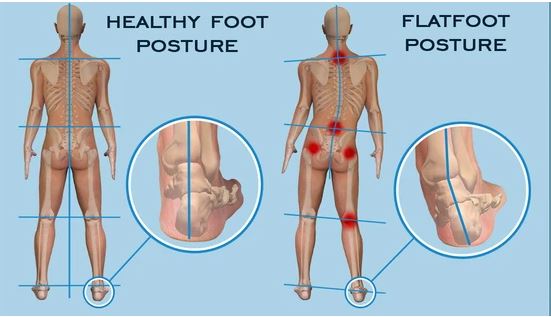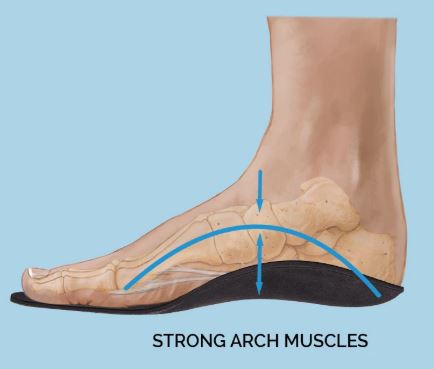Flat feet (also called pes planus or fallen arches) or Flat foot refers to a medical condition in which the arch of the foot that supports the body to stand or move is missing or inadequately low.

Podiapro designs insoles for your flat feet to provide arch support, comfort and aid forefoot propulsion. Excessive pressure on the heel and navicular bone is offloaded by custom moulding.
A flat foot causes the entire sole of the foot to come into complete or near-complete contact with the ground. Absence of the medial arch causes the foot to lose its shock absorbing capability. This can add strain to the ankle and can cause foot pain, knee pain, lower back pain and even neck pain.
Usually, flat feet are very common and nothing to worry about. You shouldn’t bother about them until they start causing you discomfort or pain. At Podiapro, we often get enquiries asking whether they should get insoles made because they’ve got flat feet. Even though you can get custom insoles or footwear for preventive purposes, we believe – If it ain’t hurting, don’t fix it. If your flat feet haven’t given you any pain, discomfort or tiredness, you probably don’t need insoles as your body seems to have adapted to your condition.
However, you should talk to us about your flat feet if:
Some people have flat feet due to a developmental fault during childhood. Others develop flat feet due to a weakening of the muscles in the foot due to aging, pregnancy, being overweight, incorrect footwear or an injury. Sometimes it just runs in the family.
If you place your foot in fine sand, or if you just wet your foot and check your footprint on a dark surface, you will see your entire foot is in contact with the ground, as in the image below. You will not see an arch in your footprint. Your foot shape will be wider than usual due to flattening of the medial arch.

Anybody who has flat feet could suffer from overall postural misalignment. When the medial arch of the foot collapses, the person experiences internal tibial torsion, meaning the shin bone and in effect the knee and the thigh born twist inwards. The hip tilts forward and the lower back develops an exaggerated curve. This misalignment can extend upwards to the upper back, shoulders and neck as well – having the ability to cause pain in all these misaligned joints.
There are two kinds of flat feet – flexible flat foot and rigid flat foot.
A rigid flat foot is when the foot is fixed with the arch flattened out. It occurs mostly due to abnormal congenital development of the foot arches. It is not possible to correct such foot posture as there is hardly any room for moulding. However, it is possible to design orthotic insoles to support the foot with custom wedged insoles that support all three parts of the foot (rear foot, mid-foot and forefoot) so that the person experiences relief from from foot pain.
A flexible flat foot is when the foot has an arch when it’s not in weight bearing position. But when the person stands up, the arch collapses towards the ground and flattens the foot. It is possible to make corrective insoles for flexible flat feet. Insoles do not permanently correct the flat foot condition, they just hold the foot in their corrected posture so that the body gets the benefit of feet having normal arches. However, long term correction is possible in children until the age of 14, when the right kind of insoles are supported with physiotherapy and foot strengthening exercises.
Podiapro’s insoles are engineered to provide correction and support to your fallen arches. Your feet are the foundation to your body’s entire musculo-skeletal system. They need to be optimally supported for them to support your body weight.


C 1, Gate No. 2, Shreyas Industrial Estate
Off Western Express Highway
Goregaon East
Mumbai, India